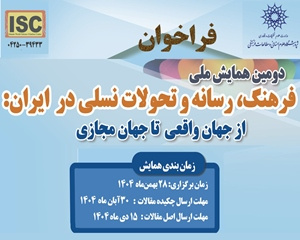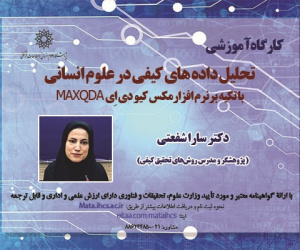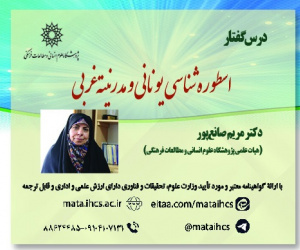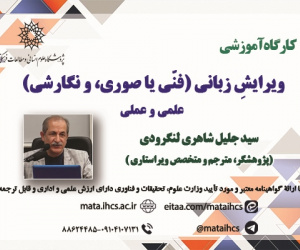بررسی زبانی-ساختاری ترجمه های چینی گلستان سعدی (چونی و چرایی فاصله زبانی- ساختاری متن مُتَرجَم گلستان با متن اصلی، و تأثیرات همسویی ایدئولوژیک مترجِم با مؤلف در امر ترجمه)
آرشیو
چکیده
"گلستان" سعدی از دیرباز در جامعه مسلمانان چین، جایگاه ویژه ای داشته است. این اثر از نخستین دهه های قرن هشتم قمری (چهاردهم میلادی) به عنوان منبع اصلی آموزش زبان فارسی در مدارس اسلامی چین مورد استفاده قرار گرفته است. با وجود این پیوند عمیق، نخستین ترجمه رسمی "گلستان" به زبان چینی در سال 1947 توسط آخوند وانگ انجام شد. پس از آن، این کتاب سه بار دیگر توسط شوئه جیان فو، یانگ ون بائو و جانگ هونگ نیان به چینی برگردانده شده است. گرچه ترجمه های اخیر نسبت به قبل بهبود یافته اند، اما هنوز کاستی هایی در سطوح زبانی و ساختاری دارند. در این پژوهش، برای نخستین بار چهار ترجمه مذکور با متن مصحح غلامحسین یوسفی از "گلستان" مقایسه و ارزیابی زبانی-ساختاری آن ها انجام شده است. دو پرسش اصلی این تحقیق عبارتند از: 1. فاصله زبانی-ساختاری ترجمه در چه سطوحی قابل طبقه بندی است؟ و 2. آیا همسویی ایدئولوژیک مترجم با مؤلف، معیاری ضروری در ترجمه متن ادبی از فارسی به چینی است؟نتایج پژوهش نشان می دهد مشکلات عمده ترجمه ها در پنج سطح قابل شناسایی است: تغییر جنسیت ضمائر، خطا در ترجمه اشخاص و اماکن، افزودن تفاسیر شخصی مترجم، حذف ایدئولوژیکی عبارات و حکایات، و تغییرات در تعداد و ترتیب حکایات. جالب است که بر خلاف تصور عمومی، ترجمه های مترجمان غیرمسلمان چینی با وجود کاستی ها، به دلیل رویکردهای متدیک، نزدیک تر به متن اصلی بوده اند. در مقابل، ترجمه های مسلمانان با کاستی های بیشتری در زبانی و حذف های ناشی از ملاحظات اعتقادی مواجه اند. یافته های این پژوهش بر اهمیت بازنگری ترجمه های آثار کلاسیک فارسی به زبان چینی توسط متخصصان ایرانی تأکید دارد.A Linguistic-Structural Study of the Chinese Translations of Sa'di's Gulistan: The How and Why of the Linguistic-Structural Gap Between the Translated Text of Gulistan and the Original Text, and the Ideological Alignments of the Translator
The Golestan by Saʿdi has been officially translated into Chinese four times: twice by Muslim translators and twice by non-Muslim translators, one of them was indirectly translated from English and the other directly from Persian. Despite the text’s historical importance in China’s Muslim Community, these translations have not yet undergone systematic analysis or comparison. This study examines these translations, evaluating linguistic and structural inconsistencies, omissions, and additions compared to the original Persian text. Using Gholamhossein Yousefi’s edited version as the reference, the translations were analyzed on lexical and syntactic levels and assessed for structural fidelity, including the inclusion and arrangement of stories. The study applied a comparative analytical method, evaluating each part in the Chinese translations against the original Persian text. Key research questions addressed the linguistic accuracy of these translations, conceptual errors, and the influence of the translators’ cultural and religious backgrounds on the Quality of translation. Findings reveal significant issues in four areas: pronoun gender shifts, mistranslations of names and places, interpretive additions by translators, and structural modifications, such as story omissions or rearrangements. Surprisingly, non-Muslim translators, owing to their methodological rigor, produced translations closer to the original text, whereas Muslim translators, influenced by religious considerations, introduced more deviations. The study underscores the importance of revisiting classical Persian works translated into Chinese, advocating collaboration between Iranian scholars and Chinese translators to enhance the fidelity and accessibility of such translations for Chinese readers.
Introduction
The masterpiece of Persian classical literature, Golestan by Saʿdi, has profoundly influenced Chinese culture, particularly within the Muslim community, for centuries. Since the early eighth century AH (14th century CE), it has been a foundational text in the curriculum of Islamic schools across China, serving as a critical resource for teaching Persian. Despite its historical and educational significance, the Golestan's first official Chinese translation appeared only in 1947, produced by Akhund Wang, a Muslim scholar. Three subsequent translations followed, authored by Shui Jianfu, Yang Wanbao, and Zhang Hongnian. This study is the first comprehensive comparative analysis of these four Chinese translations. Its primary objective is to evaluate their linguistic and structural alignment with the Persian original as edited by Gholamhossein Yousefi and to examine the influence of the translators’ cultural, religious, and methodological orientations. The research addresses key questions: How do the translations differ linguistically and conceptually? What errors, omissions, or interpretive deviations exist, and how do these affect the conveyance of Saʿdi’s ideas? To what extent do the translators’ cultural and religious backgrounds shape their decisions? Finally, which translation best preserves the Golestan's literary and thematic essence?
Literature Review
Alexander Jabbari (2020) explores cultural and political adaptations in Yang Wanbao's 2000 Chinese translation of Golestan, emphasizing alignment with Confucian, Buddhist, and state ideologies. Sara Almasie (2018) examines the accuracy of Quranic verses in Golestan's Chinese translations. This study uniquely compares four translations directly with the Persian text, addressing gaps in prior research.
Methodology
To answer these questions, the study employs a comparative analytical approach. Each translation was analyzed story by story, with reference to Yousefi’s authoritative edited version of the Golestan. The analysis focuses on linguistic features, such as word choice, syntax, and stylistic nuances, as well as structural considerations like the organization and sequencing of stories. Additionally, it evaluates cultural and ideological fidelity, assessing how closely each translation reflects Saʿdi’s intent while considering the translators’ interpretations and contextual adaptations. By identifying recurring patterns and unique characteristics, the study provides insights into the translators’ strategies and challenges.
Discussion
The findings reveal significant variations in linguistic precision and structural fidelity across the translations. Muslim scholars Akhund Wang and Yang Wanbao introduced ideological modifications and cultural adaptations that often diverge from the original text. For example, their translations frequently altered or omitted stories they perceived as conflicting with the moral and religious values of Chinese Muslim communities. Common issues include changing the gender of pronouns, mistranslating names and places, and adding interpretive commentary that shifts the meaning of the text. While these choices reflect the translators’ cultural and religious priorities, they compromise the fidelity of their work to Saʿdi’s original language and themes. In contrast, translations by non-Muslim scholars Shui Jianfu and Zhang Hongnian demonstrate greater methodological rigor and a stronger commitment to textual accuracy. Shui Jianfu’s translation, based on Edward Eastwick’s English rendering rather than the Persian original, benefits from Eastwick’s detailed annotations and contextual explanations, resulting in a relatively accurate transmission of Saʿdi’s ideas. However, Zhang Hongnian’s translation, rendered directly from Persian, stands out as the most precise and comprehensive. With deep expertise in Persian studies, Zhang captures both the linguistic subtleties and literary essence of the Golestan.
5. Conclusion
The study highlights the evolving quality of the Golestan's Chinese translations over time. Akhund Wang’s pioneering 1947 translation reflects the limited resources and linguistic tools available in mid-20th-century China. It contains numerous omissions, interpretive rewritings, and structural inconsistencies, making it less reliable as a faithful representation of the original text. Yang Wanbao’s later work claims to be the most complete Chinese translation but suffers from significant errors, including incorrect pronoun usage, stylistic inconsistencies, and deviations from the tone of Saʿdi’s prose. By contrast, the non-Muslim translators, particularly Zhang Hongnian, demonstrate that linguistic expertise and methodological precision are more critical than cultural or religious affinity in producing high-quality translations of Persian literature. This study identifies four primary categories of translation issues: changes in gendered pronouns, mistranslation of proper nouns, addition of interpretive commentary, and alterations in the sequence or number of stories. These categories are analyzed in relation to the translators’ cultural and ideological motivations. The findings suggest that Muslim translators, driven by a desire to align the Golestan with Islamic values, made deliberate modifications that sometimes undermined textual fidelity. Conversely, non-Muslim translators, unencumbered by such ideological constraints, were better able to maintain the integrity of Saʿdi’s original intent and literary style. Ultimately, this research underscores the importance of revisiting and refining Chinese translations of Persian classics, particularly the Golestan, through collaborative efforts between Iranian and Chinese scholars. While the Golestan holds an enduring place in Chinese literary and educational traditions, its translations reveal the complexities of conveying Persian literary and cultural heritage to Chinese audiences. In conclusion, this study provides a valuable framework for future research on Persian-Chinese literary translations. By identifying the strengths and weaknesses of existing translations, it calls for a more nuanced and collaborative approach to promoting Persian literature in Chinese cultural contexts. The enduring relevance of Saʿdi’s Golestan lies not only in its literary brilliance but also in its potential to foster deeper cross-cultural understanding through improved translation practices.








